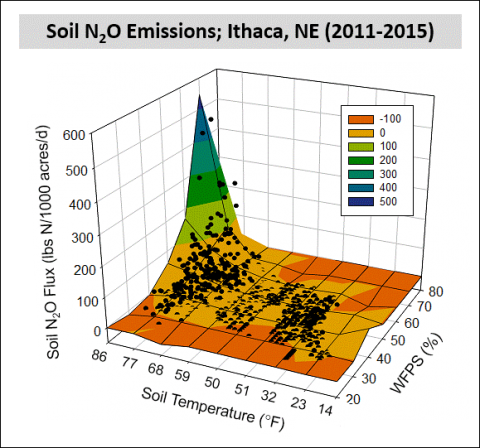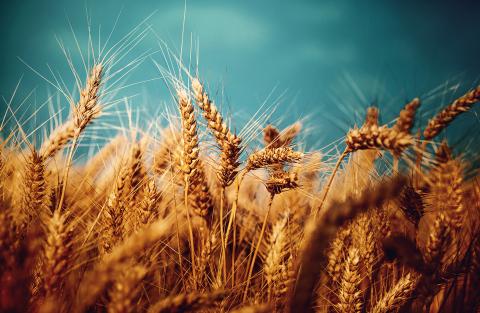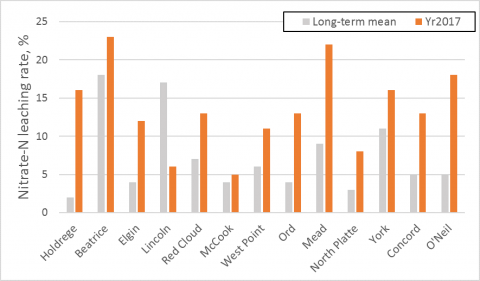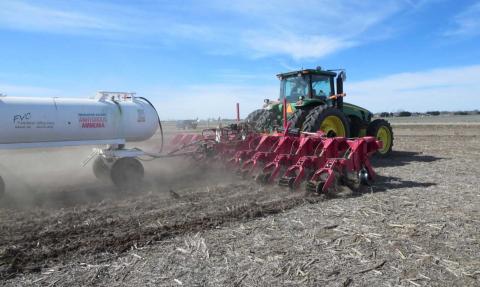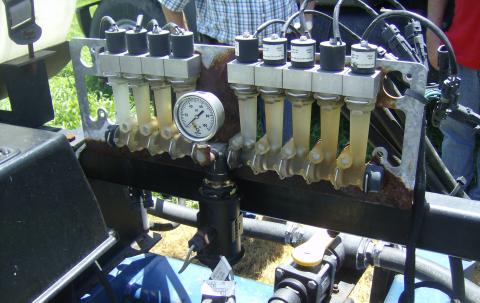Study Unearths Benefits, Limits of Fertilizing Soybeans
September 29, 2017
Soybean crops in highly productive fields demand more nitrogen than natural sources alone can supply, says a new study from University of Nebraska-Lincoln and Argentine researchers. In fields with the potential to produce 80-90 bushels per acre, researchers found fertilizer increased yields by up to 10 bushels per acre.
Managing Nitrogen to Reduce Losses as Nitrous Oxide
September 18, 2017
Nitrogen is a key factor in farm management and economics. One of the most expensive inputs for corn production, it can be easily lost to the environment. One avenue for losing N, as nitrous oxide, has an impact on our climate as a greenhouse gas. Successful strategies for reducing N losses, especially as nitrous oxide, benefit both farmers and the environment.
Fertilizer Management for Winter Wheat
August 29, 2017
With winter wheat planting drawing near, it's time to collect soil samples and determine fertilizer needs. Use the nitrogen and phosphorus information to guide your strategy.
Risk of Nitrate Leaching Across Nebraska as of May 21, 2017
May 25, 2017
Following heavy spring rains UNL soil scientists model potential loss of nitrate-N to soil leaching, finding an average 14% loss from mid-April levels, with three sites with much higher losses.
Fertilizer Price Changes from 1994-2017
April 25, 2017
Fertilizer, one of the major costs in crop production, changes more in price each year than many other input costs. This articles addresses how farmers can reduce their fertilizer costs by selecting the most economical source for the fertilizer they need.
Starter Fertilizer: When is it Warranted?
April 12, 2017
As you evaluate the cost of inputs, consider this: Only focusing on expenses without subsequent income changes is misleading. The most profitable plan uses the most profitable inputs. Is a starter fertilizer one of those inputs? The authors look at university and grower research under various conditions to see when a starter fertilizer offers economic benefits.
Recommended Resource: Nitrogen Extenders and Additives for Field Crops
March 9, 2017
A recently revised publication, Nitrogen Extenders and Additives for Field Crops, discusses their attributes, performance, and crop yield response in various trials, and reviews related research findings from land grant universities in the North Central Region.
You Can Postpone Phosphorus, Potassium, and Zinc Fertilizer Applications When….
February 28, 2017
Soil testing and applying only the soil nutrients needed to produce your yield goal can provide a significant savings in fertilizer costs. Nebraska research shows growers can save as much as $52.12/acre for postponing phosphorus, potassium and zinc applications.

